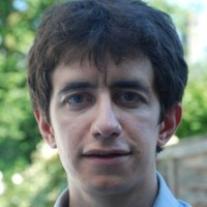Illingworth Group
Research Overview
We develop mathematical and statistical approaches to better understand the evolution of viral populations. Virus evolution can pose a threat to human and animal health, for example creating new pandemics, or evading antiviral therapy. Virus evolution also offers an opportunity, making it possible to follow the spread viruses as they transmit between hosts. We work on both of these topics with the aim of improving human and animal health.
The last 20 years have seen a revolution in terms of the cost and ease with which the genome sequences of viruses can be read. Where early experiments might describe the genome of a single virus, we can now look in depth into the diversity virus populations. Through repeated genome sequencing we can watch virus populations as they evolve.
The field of population genetics provides a mathematical framework via which to describe processes and patterns of evolution. My early work in population genetics was focused on the development of methods using data from the repeated sequencing of a population to learn about how novel genetic variants make a virus better or worse at replicating itself and spreading to other hosts.
Where progress continues into better approaches to collect genome sequence data, there is an ongoing need for mathematical methods to convert these data into scientific knowledge about virus evolution, and into an understanding of how such knowledge can be applied in a clinical context. Meeting this need is the focus of our research.
Current Research
The SARS-CoV-2 has rapidly reshaped the priorities of virological research. Recently we have focused upon the development of statistical methods to study SARS-CoV-2 transmission in a hospital context. From a research perspective, we have developed approaches integrating multiple forms of data (e.g. times of symptom onset, locations of patients on wards) with virus genome sequences so as to better identify patterns of how the virus spreads within a hospital. We have developed an app for use by clinicians, which provides a rapid and visual signal highlighting potential cases of virus transmission in hospital.
Further work has considered the spread of SARS-CoV-2 between university students and staff, and has looked at how in an immunocompromised patient SARS-CoV-2 evolved around antiviral therapy provided by convalescent plasma. We also conducted statistical work looking at how the introduction of better quality face masks for staff working on COVID wards affected the risk of staff contracting the virus from patients.
Examining data from the first wave of the SARS-CoV-2 pandemic in a UK hospital, we showed that patients who contracted SARS-CoV-2 in hospital were largely infected by other patients, rather than from hospital staff. By contrast, health care workers contracted the virus roughly equally from patients and from health care workers. Our finding supported the change in health care practice to introduce face masks for inpatients who had not been diagnosed with SARS-CoV-2.
Our app for detecting hospital-based transmissions was used by health care workers during the second wave of infection. Data suggesting that health care workers on COVID wards were still being infected by patients led to a change in hospital policy, with all staff being provided with FFP3 face masks. A statistical analysis suggested that this change led to a reduction in the risk of infection among health care workers on COVID wards.
Group Members
|
Christopher Illingworth |
Patrick Sinclair |
Grants and Collaborators
- Chris holds a visiting position at the MRC Biostatistics Unit at the University of Cambridge.
- Joe Grove, CVR
- David Robertson, CVR
- Emma Thompson, CVR
- Daniela de Angelis, MRC Biostatistics Unit, University of Cambridge
- Will Hamilton, University of Cambridge
- Ravi Gupta, University of Cambridge
- Judith Breuer, University College London



